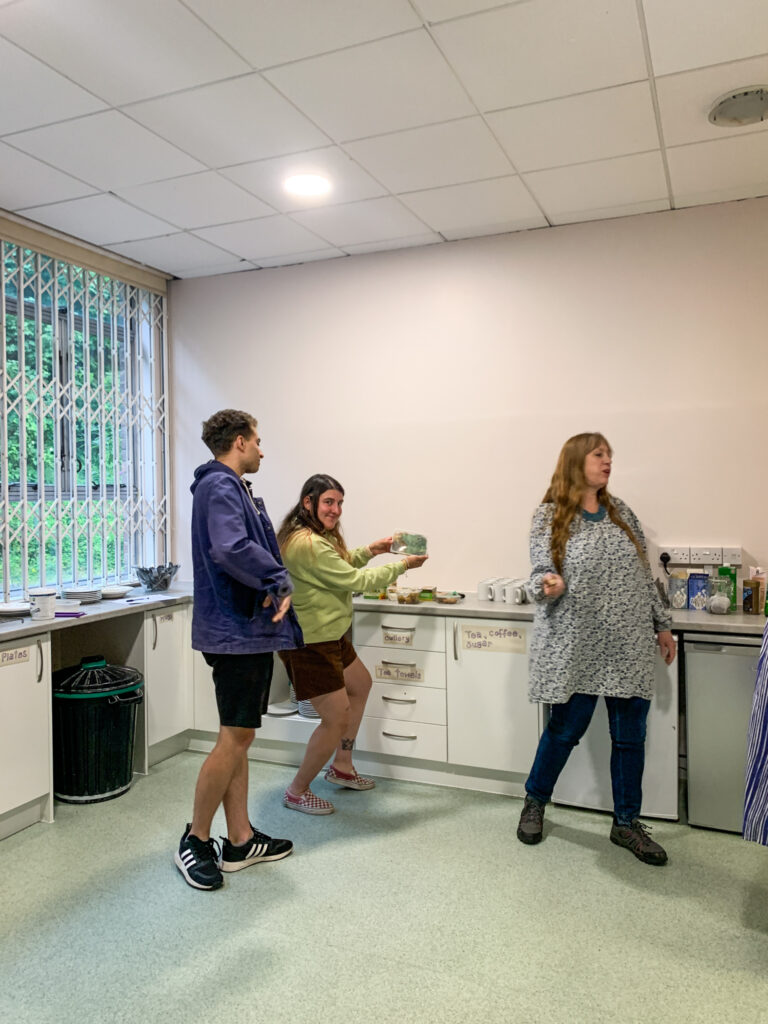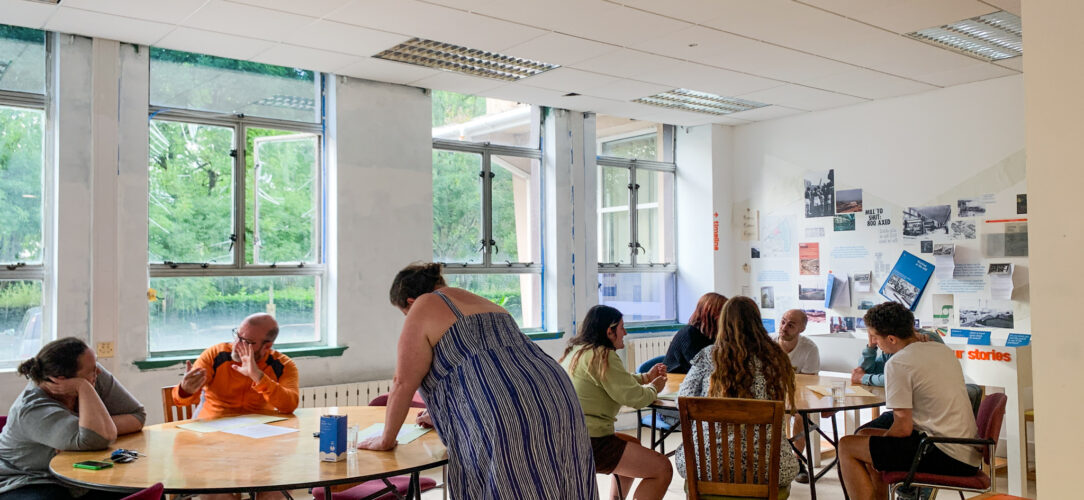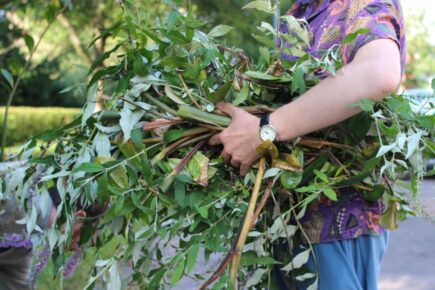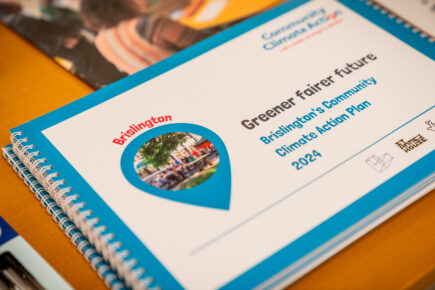Community Climate Conversation – Session 02
Carbon Footprints
In this session we explored the Carbon Footprint Reports for Brislington East and West generated using the community carbon calculator ‘impact tool’ developed by the Centre for Sustainable Energy and the University of Exeter. You can use the tool to create your own reports. You find the reports we were looking at in attached documents.
We also discussed the importance of highlighting that there is both an ecological emergency and a climate emergency. Lots of people locally are keen to think of ways we can encourage biodiversity and stop species loss so we should support that.
What is a carbon footprint?
A carbon footprint is the total amount of greenhouse gases (including carbon dioxide and methane) that are generated by our actions. This in turn contributes to climate change. The carbon footprint report looks at this on a community level.
How does knowing our carbon footprint help us tackle climate change?
The aim is to help us better understand our carbon impact so we can identify the areas where taking action to tackle climate change can make the biggest difference.
We mostly focused on the ‘Consumption-based carbon footprint’ which means all emissions produced as a result of the activities that people living here do, regardless of where they occur. We also discussed ‘territorial-based carbon footprint’ which are emissions produced in Brislington east and west regardless of whether the residents are engaged in or demand those activities (so that would include lorries going through the area, activities on trading estates etc).
We used the questions in the report to guide our conversations.
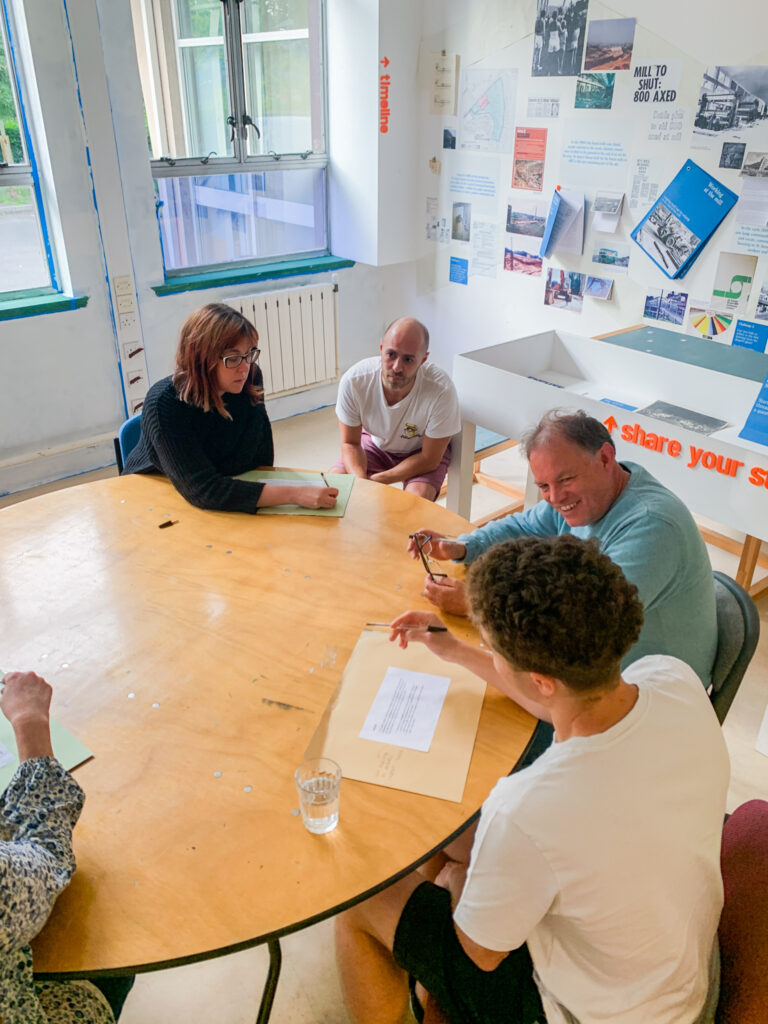
What we found out (for the consumption-based footprint)
Bris East:
Higher than GB average and higher than Bristol:
- Consumption of goods and services
Higher than Bristol average but lower than GB average:
- Travel
- Food and Diet
Same as Bristol average, lower than GB average:
- Housing
Bris West:
Higher than GB average and higher than Bristol:
- Consumption of goods and services
- Food & Diet
Higher than Bristol average but lower than GB average:
- Housing
Higher than Bristol average but same as GB average
- Travel
Notes from our group discussions using the report and ‘trigger’ questions as starting points:
Household:
How does your community’s household energy use compare with the district and national averages? What might the reasons be for the differences?
- Lots of older housing. Poor insulation
What type of housing is there in your community? And what is the main heating fuel (oil, gas, electricity, etc.)?
- Gas heating
Is the housing easily retrofitted to improve how well it retains heat and install low carbon heating? Do you know if residents are doing this? Are there already initiatives to increase demand and encourage and support residents to take action?
- No. Loss of heritage details.
- Can be an expensive outlay and takes time to see the benefit in terms of finances. If you plan to move then there is little incentive to make these changes.
Could you identify homes and buildings where the residents / owners have already made improvements, and showcase these – for example with an event?
- There could be a Green Open Doors Day where people showcase the changes they have made.
- Connect with the CHEESE project and retrofit west
Have you explored local potential for renewable energy generation schemes, such as a solar farm, rooftop solar, or wind? Could a community owned (or jointly owned) initiative be possible?
- Roof solar community scheme
Netham Weir Hydroelectric scheme (the work on this has been paused at the moment)
Are there opportunities to shift households, community buildings and businesses in your area onto green energy tariffs, where energy is generated from renewable sources?
- Jubilee pool?
Transport:
How do your community’s car use-related emissions compare to public transport emissions? And how do these both compare with the district and national averages? What might the reasons be for the differences?
- Higher than Bristol average. Lack of easy access to buses and trains in the area could account for this.
Could existing or new community schemes help residents shift their transport behaviours to using public transport (if this is a choice) or more active travel options (e.g. electric bike hire or subsidised purchase schemes)? How could the impact of local initiatives be increased?
- Free travel for under 18s – would reduce inequality and mean more young people can make use of the opportunities in the city
- Buses need to be led by Travel West – it’s not the communities responsibility
- Could do more to make cycling the ordinary choice of transport but also need to recognise it is not for everyone. Ideally each street has multiple different choices of public/active travel.
- Anything that happens needs to be accessible (not only having an app option but responding to those who are not online).
- Could look into car clubs but would need to be affordable and enough available to be viable.
Is there scope more strategically to influence provision of public transport (e.g.routes, frequency, fares, subsidies, low carbon fleets)?
- Councillors have been doing work on this and are very aware it is a key priority for residents. There is a city-wide campaign about getting more public control over the buses that we could link in with.
What is the provision of walking and cycling routes like? How accessible are local service centres and facilities to residents in different neighbourhoods? Is it possible for most households to access what they need without needing to use a car?
- Few bus routes and a hilly neighbourhood mean services are not accessible. Most people need a car or access to a bicycle.
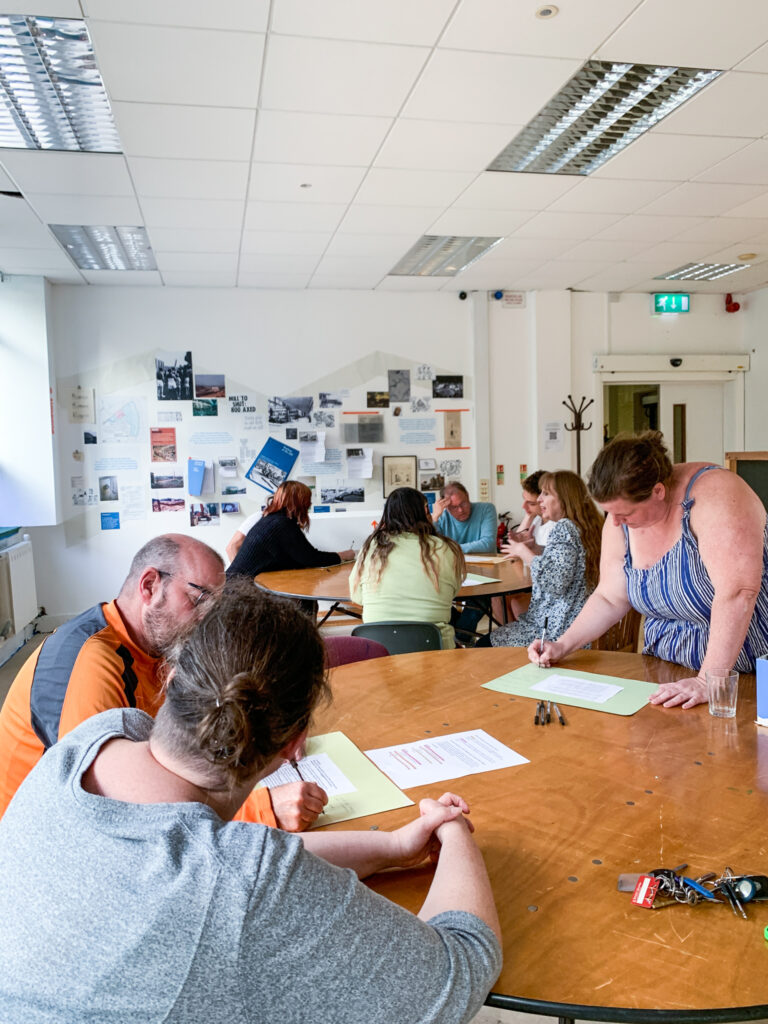
Food and drink:
Research shows us that changing what we eat will have a greater impact on carbon emissions than changing where our food has travelled from – although, of course, eating locally-produced food brings multiple other benefits
Whilst the emissions from a food item can really vary depending on how it is grown or reared, it is clear that animal products, and most significantly beef and lamb, account for the largest proportion of food-related emissions.
Could you establish or support a behavioural change campaign to encourage people to reduce the amount of meat and dairy they consume? (It is critical that any community-based activity or communications campaigns around dietary changes is sensitive to concerns about farmers’ livelihoods and people’s cultural and traditional links to meat-eating).
- People are encouraged by things that improve their own health, wellbeing and happiness – so any campaign would need to take in these things.
- Recipe sharing
- Feels like Brislington is a fairly resilient community in terms of food?
The amount of food wasted ‘post-farm-gate’ in the UK is equivalent to 22% of food purchased. What initiatives could raise awareness about food waste and encourage unwanted food to be redistributed (e.g. through a ‘community fridge’)?
- Currently we rely on lots of convenience food and unseasonal food.
- We have allotment access, many people have small gardens and an accessible supermarket.
- There are many older people in the local population who are good at avoiding food waste – people to learn from
- Build on what is already happening: There is some informal food sharing that happens through WhatsApp groups and allotments connected into the Bountiful Bristol project. Informal links between people helps food stop going to waste e.g. leftover oranges at the children’s centre going to the Kurling club. People use Olio and Too good to go. Food Club
- How can we support kids making healthy choices with food and learn to use up leftovers?
Goods and services:
Reducing how many new goods we buy in the first place is the best place to start in terms of reducing goods-related emissions; and then of course re-using and repairing items where goods are needed.
How do your community’s goods and services-related emissions compare with the district and national average? What might the reasons be for the differences?
- Worse than Bristol. Maybe because some parts of Brislington may be more affluent than some parts of Bristol?
Are there opportunities to: grow the second-hand market; enable residents to upcycle and repair household items; share larger/more expensive/rarely used items, such as power tools?
- Could there be a zero waste shop and library of things under the same roof? Needs to be a spot that is easy to access. There is a library of things in Kingswood but realistically it needs to be closer for lots of people to use it.
- Can community hubs share items to create an informal library of things?
- A hackspace where people can repair and make – see this example of one in St Phillips: https://bristolhackspace.org/
Are there opportunities to encourage businesses to switch to green energy tariffs (where energy is generated from renewable sources), or to support local businesses who want to reduce their emissions (e.g. with cargo bike deliveries to replace vans; energy efficiency improvements to buildings to reduce heat demand; low carbon procurement policies; local sourcing and carbon-conscious materials?
- Not sure if people are at that stage in their journey yet. How do we support people with this?
- Trading estates cause a lot of emission in the area. work with owen to get them onto Green tarrifs. How can we make this easy for the business and traders in the ward?
- Power purchasing agreement to negotiate good prices – a consortium of people together to make them get a green tariff.
- Foot in door with local e.g. brewery to give an in
- A lot of the business are chains not connected with the local area.
- Wind turbines on trading estates?
- Encouraging people to pick up parcels from central place if possible rather than having them delivered all over.
- Swap shop for items and skills
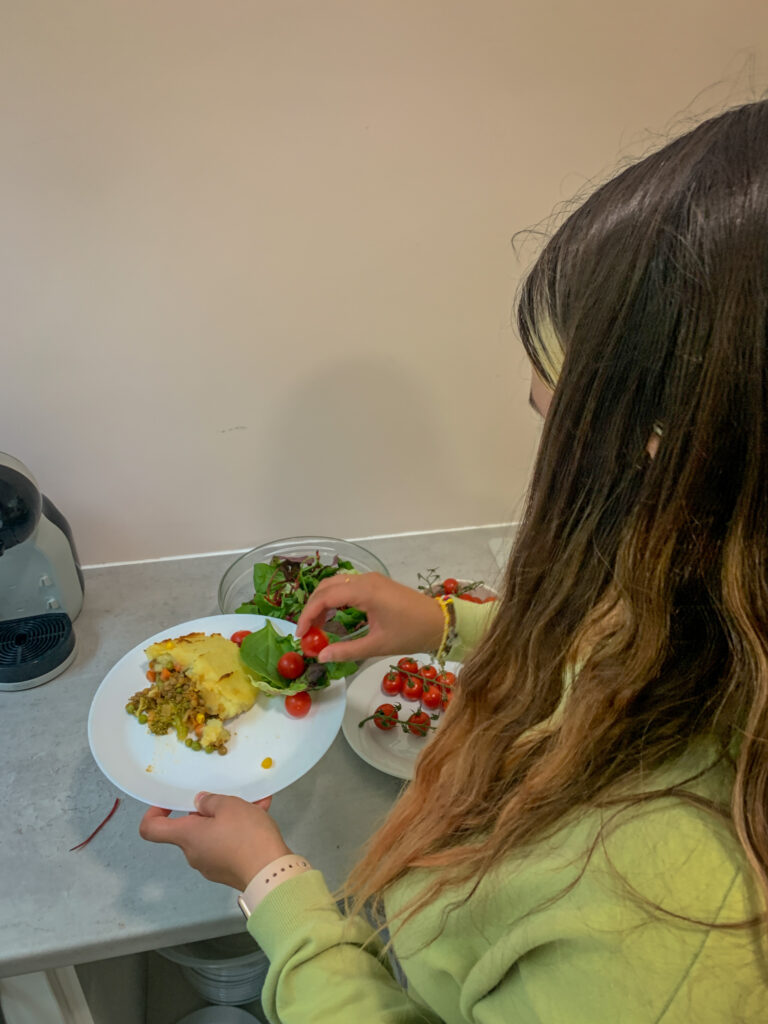
Waste:
The waste ‘wedge’ in your carbon footprint may look small, but remember that emissions from the management of waste only represent a small fraction of the total emissions associated with every item that ends up in our bins or recycling boxes. So reducing waste in the first place is critical.
What sort of messaging could be effective in helping to reduce the amount of waste being generated (e.g. avoiding plastic packaging, water bottle refills, home composting)?
- Cost saving initiatives – Needs to be beneficial for the individual (as well as the wider environment). We want to avoid putting any blame on the individual.
- Use mutual aid/whatsapp to encourage street sharing
- Community event to kick off local sharing
- How do you embed this in the culture?
What initiatives are likely to be popular (e.g. local food boxes, repair cafes, swap shops)?
- Skill swapping – already happens informally at the repair cafe?
- Free water bottle refills
- Talks/lectures
- Sustainable clothing industry “thrift shop”
- Charity shops
- School uniform swap
- Street sheds with tools and items for the street to use
- Re-shop
- Shared cargo bike
- Accessible ‘pot luck’ day.
- Reducing food waste: Mutual aid to share and distribute food from businesses and residents to those that can use that food/those ingredients to make compost for a community garden
We discussed how people put items out to take on the wall but how this can sometimes mean electronic items get wet and can also block pavements which is an issue for people who are navigating the pavement with wheelchair, prams etc. Could we do a ‘park luck’ where people bring items to the park to swap? Could also do a recycle, reuse trail (like an arts trail).
We talked about how concentrating activity over a weekend and showcasing these different ideas and activities could engage more people.
What next?
Conversation about next steps:
- Meetings to be held in different locations in Brislington
- Make sure the group stays open – each meeting should still be an open invite rather than creating a closed group like a steering committee.
- The role of these kind of meetings can be to take input from other events and local conversations and streamline it/look at priorities as well as think about how to move things forward.
- Use funds to help with travel to the sessions. Make sure we are supporting people to attend.
